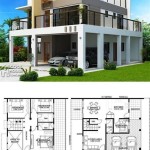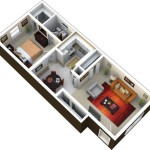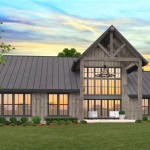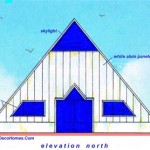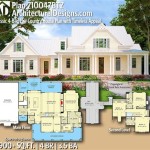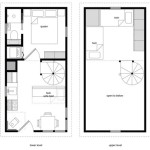Plans for houses are comprehensive blueprints that outline the architectural design, structural integrity, and functionality of a residential building. These detailed documents provide a visual representation of the house’s layout, room dimensions, and exterior appearance, serving as the foundation for construction.
Architects and engineers meticulously craft these plans, considering factors such as the building code, environmental conditions, and the client’s specific requirements. They ensure that the house adheres to safety regulations, meets functional needs, and aligns with the desired aesthetic. From cozy cottages to sprawling mansions, plans for houses play a pivotal role in shaping the living spaces we inhabit.
As we delve deeper into this article, we will explore the essential elements of house plans, including the different types, the benefits of using them, and the key considerations involved in their development. By understanding the intricacies of house plans, homeowners and builders alike can make informed decisions to create safe, livable, and aesthetically pleasing homes.
When creating plans for houses, several important points must be considered:
- Building codes
- Zoning regulations
- Lot size and orientation
- Client’s needs and preferences
- Energy efficiency
- Structural integrity
- Exterior appearance
- Interior layout
- Budget
These factors influence the design and functionality of the house, ensuring that it meets safety standards, aligns with the surrounding environment, and fulfills the client’s vision.
Building codes
Building codes are essential regulations that govern the design, construction, and maintenance of buildings to ensure public safety, health, and welfare. These codes establish minimum standards for structural integrity, fire safety, accessibility, energy efficiency, and other aspects of building design.
When creating plans for houses, architects and engineers must adhere to the building codes applicable to the specific location where the house will be built. These codes may vary from one jurisdiction to another, so it is crucial to consult with local building officials to determine the specific requirements that apply.
Building codes typically cover a wide range of topics, including:
- Structural requirements: These codes ensure that buildings are designed and constructed to withstand the anticipated loads and forces, such as gravity, wind, and seismic activity.
- Fire safety requirements: These codes aim to minimize the risk of fire and its spread within buildings. They specify requirements for fire-resistant materials, compartmentalization, and egress.
- Accessibility requirements: These codes ensure that buildings are accessible to individuals with disabilities. They specify requirements for ramps, elevators, and other accessibility features.
- Energy efficiency requirements: These codes promote energy conservation and sustainability in buildings. They specify requirements for insulation, windows, and other energy-efficient features.
By adhering to building codes, plans for houses ensure that the resulting structures are safe, habitable, and compliant with the applicable regulations.
Zoning regulations
Zoning regulations are land use laws that divide a municipality into different zones, each with its own set of permitted uses and development standards. These regulations are designed to promote orderly development, protect property values, and ensure the compatibility of different land uses within a community.
When creating plans for houses, architects and engineers must consider the zoning regulations applicable to the specific lot where the house will be built. These regulations may specify the following:
- Permitted uses: The types of uses that are allowed on the lot, such as residential, commercial, or industrial.
- Building height and setbacks: The maximum height of buildings and the minimum distance they must be set back from property lines.
- Lot coverage: The maximum percentage of the lot that can be covered by buildings and other structures.
- Parking requirements: The number of parking spaces that must be provided for different types of uses.
- Landscaping requirements: The types and amount of landscaping that must be provided on the lot.
By adhering to zoning regulations, plans for houses ensure that the resulting structures comply with the land use laws of the community and contribute to the overall livability and aesthetic appeal of the neighborhood.
In addition to the above, zoning regulations may also include provisions related to:
- Historic preservation: Protecting historic buildings and districts.
- Environmental protection: Conserving natural resources and protecting sensitive ecosystems.
- Affordable housing: Promoting the development of affordable housing options.
- Mixed-use development: Encouraging the integration of different land uses, such as residential, commercial, and recreational, within a single development.
Zoning regulations are essential tools for shaping the built environment and ensuring that new development is compatible with the existing community.
Lot size and orientation
The size and orientation of the lot play a significant role in determining the design of a house. The following factors should be considered:
- Lot size: The size of the lot will determine the overall size of the house and the amount of outdoor space available. It is important to choose a lot that is large enough to accommodate the desired house size and outdoor amenities, while also considering the cost of the land and property taxes.
- Lot orientation: The orientation of the lot, in relation to the sun and prevailing winds, can affect the energy efficiency and comfort of the house. For example, a house with a southern orientation will receive more sunlight, which can help to reduce heating costs in cold climates. Conversely, a house with a northern orientation will receive less sunlight, which can help to keep the house cool in hot climates.
- Shape of the lot: The shape of the lot can also affect the design of the house. A rectangular lot is typically easier to build on than an irregularly shaped lot. However, an irregularly shaped lot can offer unique opportunities for creative design.
- Slope of the lot: The slope of the lot can also affect the design and cost of the house. A sloping lot may require more excavation and grading, which can increase the cost of construction. However, a sloping lot can also offer opportunities for interesting and unique designs, such as a walkout basement or a hillside home.
By carefully considering the size and orientation of the lot, architects and engineers can design a house that is well-suited to the site and meets the client’s needs.
Client’s needs and preferences
When creating plans for houses, it is essential to consider the client’s needs and preferences. These factors can influence every aspect of the design, from the overall size and layout of the house to the specific details of the interior and exterior.
One of the most important things to consider is the client’s lifestyle. How many people will be living in the house? What are their ages and activities? Do they have any special needs or preferences? For example, a family with young children may need a house with a large backyard and a playroom, while a couple of retirees may prefer a smaller house with a focus on accessibility and energy efficiency.
The client’s budget is another important consideration. The cost of building a house can vary significantly depending on the size, complexity, and materials used. It is important to work with the client to determine a realistic budget and to design a house that meets their needs without exceeding their financial constraints.
The client’s aesthetic preferences should also be taken into account. Some clients may prefer a traditional style house, while others may prefer a more modern or contemporary design. The architect should work with the client to develop a design that reflects their personal style and taste.
Energy efficiency
Energy efficiency is an important consideration when creating plans for houses. By incorporating energy-efficient features into the design, homeowners can reduce their energy consumption and save money on their utility bills. In addition, energy-efficient homes are more comfortable to live in and have a smaller environmental impact.
- Insulation: Insulation is one of the most important factors in energy efficiency. It helps to keep the house warm in the winter and cool in the summer, reducing the need for heating and cooling. Insulation can be installed in the walls, roof, and attic.
- Windows and doors: Windows and doors are another important source of heat loss. Energy-efficient windows and doors are designed to minimize heat transfer, helping to keep the house more comfortable and reduce energy consumption.
- Appliances: Energy-efficient appliances use less energy to operate, which can save money on utility bills. Look for appliances with the Energy Star label, which indicates that they meet certain energy-efficiency standards.
- Lighting: Lighting accounts for a significant portion of energy use in homes. Energy-efficient lighting options, such as LED bulbs, use less energy and last longer than traditional incandescent bulbs.
By incorporating these energy-efficient features into the plans for houses, architects and engineers can design homes that are more comfortable, affordable, and environmentally friendly.
Structural integrity
Structural integrity refers to the ability of a building to withstand the forces that act upon it, such as gravity, wind, and seismic activity. It is essential for the safety and stability of the building and its occupants.
When creating plans for houses, architects and engineers must carefully consider the structural integrity of the building. This involves calculating the loads that will be acting on the building and designing the structure to resist these loads safely. The following factors are typically considered:
- Dead loads: These are the loads that act on the building, such as the weight of the building materials, fixtures, and occupants.
- Live loads: These are the variable loads that act on the building, such as the weight of furniture, people, and snow.
- Wind loads: These are the loads that are caused by the wind blowing against the building.
- Seismic loads: These are the loads that are caused by earthquakes.
The structural system of the house must be designed to resist all of these loads safely. This typically involves using a combination of structural elements, such as beams, columns, and walls. The structural system must be able to transfer the loads from the roof and walls to the foundation, which in turn transfers the loads to the ground.
In addition to the structural system, the materials used in the construction of the house also play an important role in its structural integrity. The materials must be strong enough to withstand the loads that will be acting on them. Common materials used in the construction of houses include wood, concrete, steel, and masonry.
By carefully considering the structural integrity of the house, architects and engineers can design homes that are safe and stable, even in the face of adverse conditions.
In addition to the above, there are a number of other factors that can affect the structural integrity of a house, including:
- The quality of the workmanship: The quality of the workmanship can have a significant impact on the structural integrity of the house. It is important to hire experienced and qualified contractors to build your home.
- The condition of the soil: The condition of the soil can also affect the structural integrity of the house. If the soil is not properly compacted, it can settle over time, which can cause the house to shift and crack.
- The presence of moisture: Moisture can also damage the structural elements of the house. It is important to keep the house dry and well-ventilated to prevent moisture damage.
By considering all of these factors, architects and engineers can design and build houses that are structurally sound and safe for the occupants.
Exterior appearance
The exterior appearance of a house is an important consideration for many homeowners. It can affect the curb appeal of the house, its value, and the overall enjoyment of the property. When creating plans for houses, architects and engineers must consider a number of factors related to the exterior appearance, including:
- Architectural style: The architectural style of the house will influence its overall appearance. Some popular architectural styles include traditional, modern, contemporary, and craftsman.
- Materials: The materials used on the exterior of the house will also affect its appearance. Common materials include wood, brick, stone, and stucco.
- Color: The color of the house is another important consideration. The color should complement the architectural style of the house and the surrounding environment.
- Landscaping: The landscaping around the house can also affect its exterior appearance. Landscaping can be used to create a welcoming and inviting atmosphere, and to enhance the overall beauty of the property.
By carefully considering all of these factors, architects and engineers can design houses that are both aesthetically pleasing and functional.
In addition to the above, there are a number of other factors that can affect the exterior appearance of a house, including:
- The size and shape of the house: The size and shape of the house will affect its overall appearance. A large house with a complex shape will have a different appearance than a small house with a simple shape.
- The roofline: The roofline of the house can also affect its appearance. A house with a steep roofline will have a different appearance than a house with a flat roofline.
- The windows and doors: The windows and doors of the house can also affect its appearance. The size, shape, and style of the windows and doors can all contribute to the overall look of the house.
- The driveway and walkway: The driveway and walkway can also affect the exterior appearance of the house. The materials used and the design of the driveway and walkway can all contribute to the overall look of the property.
By considering all of these factors, architects and engineers can design houses that are both aesthetically pleasing and functional.
Interior layout
The interior layout of a house is another important consideration when creating plans for houses. The layout should be functional, efficient, and aesthetically pleasing. It should also meet the specific needs of the homeowners.
- Flow: The flow of the house refers to the way that people move through the space. The layout should be designed to allow for easy and efficient movement between different rooms and areas of the house.
- Function: The layout should also be functional, meaning that it should meet the specific needs of the homeowners. For example, a family with young children may need a house with a large kitchen and a playroom, while a couple of retirees may prefer a house with a smaller kitchen and a larger living room.
- Aesthetics: The interior layout should also be aesthetically pleasing. The layout should be visually appealing and should create a comfortable and inviting atmosphere.
- Space planning: Space planning is the process of arranging the furniture and other objects in a room to create a functional and visually appealing space. When creating plans for houses, architects and engineers must carefully consider the space planning of each room to ensure that the space is used efficiently and effectively.
By carefully considering all of these factors, architects and engineers can design houses with interior layouts that are both functional and beautiful.
Budget
The budget is one of the most important factors to consider when creating plans for houses. The budget will determine the size, style, and features of the house. It is important to set a realistic budget and to stick to it. Otherwise, you may end up with a house that is too expensive or that does not meet your needs.
There are a number of factors that can affect the cost of building a house, including the size of the house, the complexity of the design, the materials used, and the cost of labor. It is important to factor in all of these costs when setting your budget.
Once you have set a budget, it is important to work with your architect or builder to develop a plan that meets your needs and stays within your budget. There are a number of ways to save money on the cost of building a house, such as choosing a smaller house, using less expensive materials, and doing some of the work yourself.
It is also important to factor in the cost of ongoing maintenance when setting your budget. The cost of maintenance can vary depending on the size and style of the house, as well as the materials used. It is important to budget for ongoing maintenance costs so that you can keep your house in good condition.
In addition to the above, there are a number of other factors that can affect the budget for plans for houses, including:
- The location of the house: The cost of land can vary significantly depending on the location. Land in desirable areas is typically more expensive than land in less desirable areas.
- The availability of labor: The cost of labor can also vary depending on the location. Labor costs are typically higher in areas with a high demand for construction workers.
- The time of year: The cost of building a house can also vary depending on the time of year. Building costs are typically higher during the spring and summer months when there is more demand for construction services.
By considering all of these factors, you can set a realistic budget for your plans for houses and avoid overspending.









Related Posts

